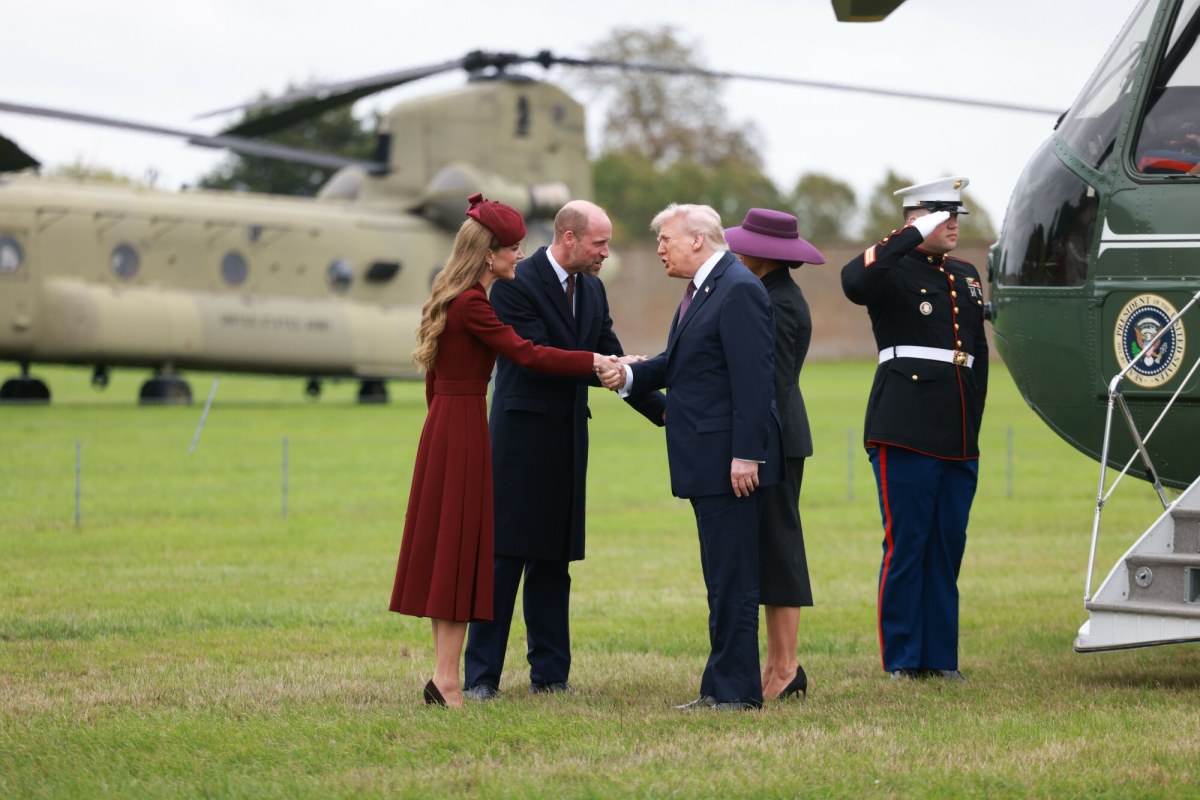
Вы получаете сделку, и вы получаете сделку, и вы получаете сделку.
Maartie Wiiffelaars, старший экономист Rabobank
Вы получаете сделку, и вы получаете сделку, и вы получаете сделку. Трамп, похоже, заключает сделки в эти дни, поскольку Опра когда-то раздавала автомобили. Великобритания, Китай, Катар, Саудовская Аравия и Объединенные Арабские Эмираты подписали какое-то соглашение с США через неделю - в то время как Сирии может быть предоставлено облегчение санкций, и Ирану в основном приходится выбирать между ядерной сделкой или более строгими санкциями в отношении своего экспорта нефти.
Однако взаимная выгода не очевидна во всех вышеперечисленных случаях и в любом случае искажена. Универсальный тариф в размере 10% все еще действует, а китайские товары по-прежнему подвергаются 20-30-процентному повышению импортных тарифов - с риском гораздо более высоких ставок в течение 90 дней, если окончательная сделка не может быть достигнута в то же время. Между тем, в последнее время на переговорах в Японии и Корее было довольно тихо, в то время как переговоры с Индией все еще продолжаются, и переговоры со странами Юго-Восточной Азии и ЕС идут медленно. Хотя Скотт Бессент недавно сказал, что переговоры с Японией были «очень продуктивными», переговоры с Индонезией «очень предстоящими» и предложение Тайваня быть «очень хорошими».
Итак, По сути, на полпути к 90-дневной взаимной тарифной паузе еще предстоит проделать большую работу, чтобы предотвратить повторный рост взаимной ставки с 10% до 20% для ЕС, до 26% для Индии, до 46% для Вьетнама - региональных ворот Китая в США - и, возможно, 54% для самого Китая.. Разумеется, это не является продолжением паузы.
Что касается американо-индийских переговоров, Индия до сих пор понижала импортные тарифы на американский бурбон и мотоциклы, среди прочего, и Трамп заявил, что Индия «предложила нам сделку, где в основном они готовы буквально взимать с нас никаких тарифов». На что министр иностранных дел Индии ответил, сказав, что «ничто не решается, пока все не будет решено», и что сделка должна быть взаимовыгодной. Одним из камней преткновения, отмеченных в вчерашних новостях, были просьбы США к Индии открыть свой рынок для американского этанола. Однако Индии будет трудно смириться с этим, учитывая ее амбиции по снижению зависимости от иностранной энергии и стимулированию внутреннего производства этанола, что принесет пользу отечественным фермерам, и фермерам явно будет больно, если откроются двери для американского этанола и других сельскохозяйственных продуктов. Между тем, Трамп ясно дал понять, что США не хотят, чтобы Индия заменила Китай в качестве центра для крупномасштабного производства, заявив Тиму Куку из iPhone инвестировать в производство iPhone в США, а не в Индии.
Таким образом, в то время как Индия будет очень рада работать с США, чтобы противостоять Китаю, хотя экспортные ограничения Китая на оборудование, необходимое для производства чего-либо, от электроники до электромобилей, показывают, насколько трудно на самом деле вырезать Китай. Это не гарантирует легкого заключения сделок.
В Юго-Восточную Азию, где такие страны, как Вьетнам, Таиланд и Индонезия, пытаются обсудить сделку на встрече АТЭС в Южной Корее на этой неделе, где присутствует торговый представитель США Грир и которая завершается сегодня. Помимо снижения тарифов на американские товары, основной проблемой будет то, что китайские товары будут реэкспортироваться через страны в США. Существует множество способов, с помощью которых регион поддерживает такие потоки. Одним из них является стирка по правилам происхождения в своих портах, в основном перемаркировка китайского производства без добавления стоимости. Это незаконно и вряд ли выгодно какой-либо из вовлеченных стран, хотя это трудно отследить. Еще один путь заключается в импорте китайских материалов и деталей, которые будут использоваться в производстве, что выгодно и очень трудно, если вообще невозможно устранить.
Последние данные по портам показывают, что импорт в регион вырос за последние два месяца, как и экспорт из некоторых портов в регионе, обеспечивая Трампа боеприпасами. Как мы подчеркивали ранее, для того, чтобы эти страны заключили сделку или нет, очень важно, насколько жесткой будет позиция администрации Трампа. Премьер-министр Вьетнама подчеркнул на этой неделе, что главным приоритетом США является противодействие незаконной перевалке, что дает некоторую надежду на соглашение. Хотя чиновники выразили сомнение в Рейтер Если бы заседание АТЭС действительно смогло сформулировать сегодня совместное заявление.
Наконец, Переговоры между ЕС и США пока идут очень медленно. ЕС предлагает покупать больше американского СПГ и оружия и снизить тарифы на промышленные товары США, если США сделают то же самое, до сих пор были отклонены. Переговоры, возможно, переходят к следующему этапу, но мы не ожидаем ничего в ближайшее время.
Несогласные ранее на этой неделе заявили, что ЕС «страдает от проблемы коллективных действий»«с разными странами, которые хотят разных вещей. Вчерашнее заседание министров торговли ЕС подтвердило, что ЕС не хочет соглашаться на сделку, сохраняющую универсальный тариф в размере 10%. Это кажется не подлежащим обсуждению для США, и в настоящее время разрабатываются более секторальные тарифы. В частности, тариф на фармацевтические препараты будет очень болезненным для ЕС, поскольку он составляет около 20% торговли с США.
ЕС распространил лист терминов среди своих государств-членов с возможными предложениями, которые будут сделаны США, чтобы прийти к соглашению. Тем не менее, в то же время он создал список с дополнительными американскими товарами, которые будут поражены перебалансировкой тарифов и ограничениями экспорта без сделки. И лист, и список в настоящее время находятся на рассмотрении заинтересованных сторон, которое должно быть завершено в первой половине июня. По данным Bloomberg, среди предложений на листе - инвестиции в СПГ и ИИ, сотрудничество ЕС и США в таких секторах, как металлы, автомобили, полупроводники, критические минералы и авиация. В целом ЕС по-прежнему готов рассмотреть тарифы на промышленные товары, но сельское хозяйство - это нечто совсем другое. Кроме того, он хочет сотрудничать в борьбе с избыточными мощностями и демпингом в Китае, но не хочет ослаблять Китай. Наконец, налоговые, экологические и правила безопасности не подлежат обсуждению. В целом, на данный момент мы все еще ожидаем, что больше тарифов ударит по ЕС, будь то возвращение дополнительных тарифов для конкретной страны и / или более отраслевых тарифов. Если это так, ЕС введет в действие частичный пакет перебалансировки тарифов.
В других новостях мы узнали вчера, что экономика Великобритании выросла на 0,7% кв/кв в первом квартале года, превзойдя ожидания (0,6% кв/кв) и сверстников, таких как США и Еврозона. Рост в Великобритании был обусловлен увеличением валового накопления основного капитала, чистой торговли и потребления домашних хозяйств. Чистая торговля способствовала росту на 36 базисных пунктов, во многом благодаря росту экспорта промышленных товаров, что само по себе было в основном результатом фронтальной загрузки. Однако и частные, и государственные расходы также выросли. По объему выпуска промышленное производство выросло на 1,1%, а строительный сектор не показал роста. Сектор услуг, однако, расширился на 0,7% и стал крупнейшим фактором общего роста производства.
Это подтверждает, что рост обусловлен не только фронтальной загрузкой. И это говорит о том, что предприятия и потребители держались задолго до того, как вступило в силу повышение налогов Лейбористской партии и торговая война Трампа начала поражать доверие. В этом отчете есть признаки устойчивости, но последние данные, такие как PMI и опросы рынка труда с апреля, указывают на резкое замедление во 2 квартале.
Очень сильные показатели промышленного производства в еврозоне за март, вероятно, также были обусловлены перегрузкой, но, возможно, также отражением стабилизации в производственном секторе после промышленной рецессии в 2024 году. Более интересным в этом отношении является рост занятости в еврозоне на 0,3%, ускорение с 0,1% в 4 квартале. Это произошло на фоне геополитической и тарифной неопределенности, и, несмотря на это, бизнес увеличил занятость. Это может указывать на то, что эффекты доверия не так велики, как опасались, или, по крайней мере, на контраст между тем, что компании боятся / думают и как они действуют.
Во втором чтении показатель ВВП еврозоны Q1 составил 0,3% кв/кв., что несколько ниже первой оценки в 0,4% кв/кв., но на первый взгляд все еще выглядит солидно. Тем не менее, хотя потребление, вероятно, способствовало положительному результату, самой большой движущей силой, по-видимому, было накопление запасов, которое, как ожидается, снова станет отрицательным в этом квартале. Кроме того, рост экспорта, по-видимому, был слабым, несмотря на явные признаки перегрузки. В будущем потребление, скорее всего, продолжит поддерживать экономику, но слабость и неопределенность, связанные с торговой войной, скорее всего, подавят рост инвестиций и рост экспорта, хотя в таких секторах, как фармацевтика, может сохраниться некоторая нагрузка. Со следующего года мы должны увидеть первое существенное положительное влияние ВВП от увеличения расходов на оборону - Германия вчера подтвердила, что увеличит военные расходы до 5% ВВП в ближайшие годы, как того требует Трамп.
В США цены производителей упали в апреле на 0,5% м/м, пока не показывая влияния тарифов, что соответствует более ранним показателям ИПЦ. Тем не менее, влияние будет, например, Walmart заявил вчера, что ожидает, что повышение цен станет действительно заметным в этом месяце. Розничные продажи контрольной группы показали слабый личностный рост в апреле, но это было также в январе, после чего продажи в целом оказались в порядке в 1 квартале. Таким образом, слабость видна, но она еще не вызывает тревогу. Наконец, первоначальные заявления о безработице были стабильными, поэтому к 10 мая ничего шокирующего там не было.
Тайлер Дерден
Фри, 05/16/2025 - 10:30












